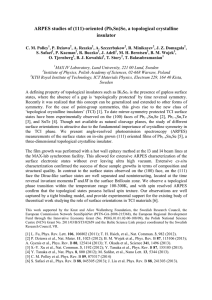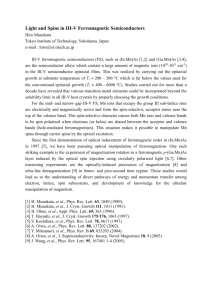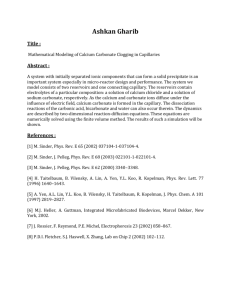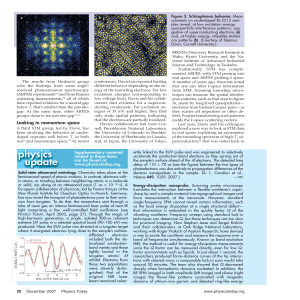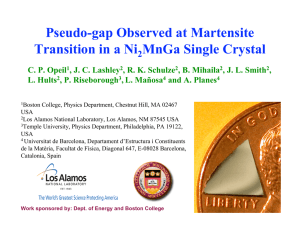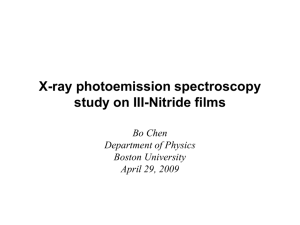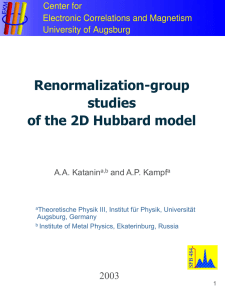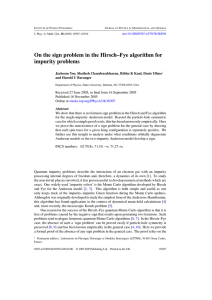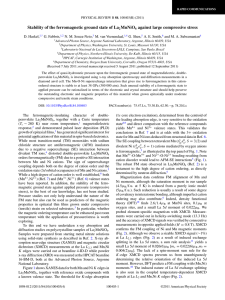Soft X-Ray Spectroscopies of Ferromagnetic Semiconductors
advertisement
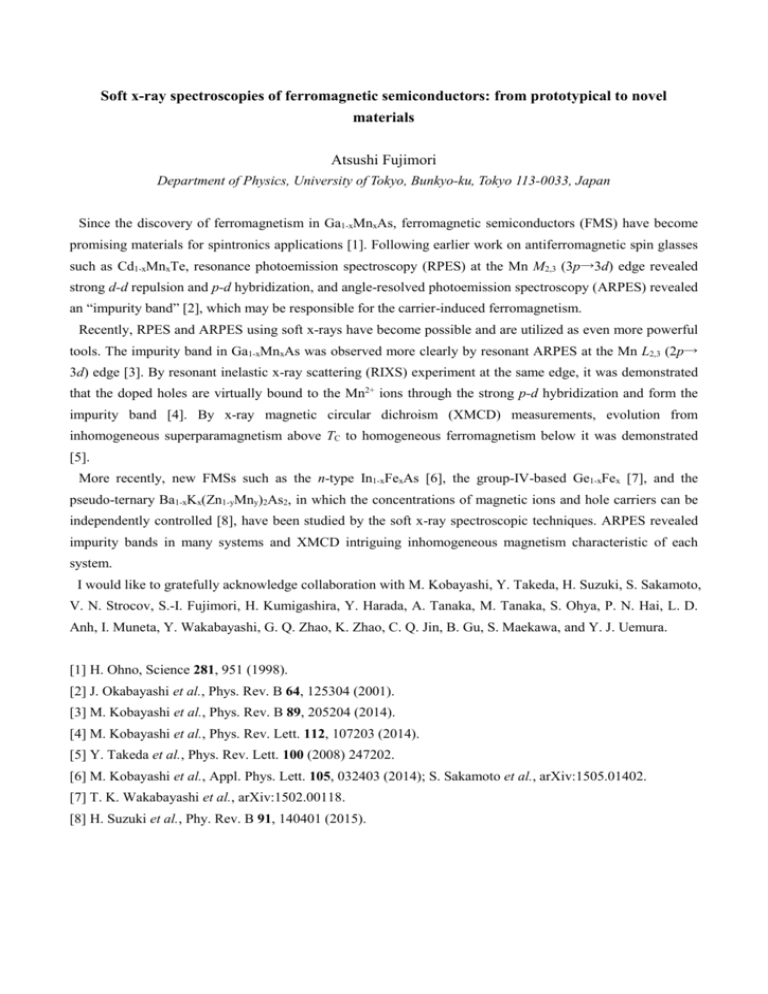
Soft x-ray spectroscopies of ferromagnetic semiconductors: from prototypical to novel materials Atsushi Fujimori Department of Physics, University of Tokyo, Bunkyo-ku, Tokyo 113-0033, Japan Since the discovery of ferromagnetism in Ga1-xMnxAs, ferromagnetic semiconductors (FMS) have become promising materials for spintronics applications [1]. Following earlier work on antiferromagnetic spin glasses such as Cd1-xMnxTe, resonance photoemission spectroscopy (RPES) at the Mn M2,3 (3p→3d) edge revealed strong d-d repulsion and p-d hybridization, and angle-resolved photoemission spectroscopy (ARPES) revealed an “impurity band” [2], which may be responsible for the carrier-induced ferromagnetism. Recently, RPES and ARPES using soft x-rays have become possible and are utilized as even more powerful tools. The impurity band in Ga1-xMnxAs was observed more clearly by resonant ARPES at the Mn L2,3 (2p→ 3d) edge [3]. By resonant inelastic x-ray scattering (RIXS) experiment at the same edge, it was demonstrated that the doped holes are virtually bound to the Mn2+ ions through the strong p-d hybridization and form the impurity band [4]. By x-ray magnetic circular dichroism (XMCD) measurements, evolution from inhomogeneous superparamagnetism above TC to homogeneous ferromagnetism below it was demonstrated [5]. More recently, new FMSs such as the n-type In1-xFexAs [6], the group-IV-based Ge1-xFex [7], and the pseudo-ternary Ba1-xKx(Zn1-yMny)2As2, in which the concentrations of magnetic ions and hole carriers can be independently controlled [8], have been studied by the soft x-ray spectroscopic techniques. ARPES revealed impurity bands in many systems and XMCD intriguing inhomogeneous magnetism characteristic of each system. I would like to gratefully acknowledge collaboration with M. Kobayashi, Y. Takeda, H. Suzuki, S. Sakamoto, V. N. Strocov, S.-I. Fujimori, H. Kumigashira, Y. Harada, A. Tanaka, M. Tanaka, S. Ohya, P. N. Hai, L. D. Anh, I. Muneta, Y. Wakabayashi, G. Q. Zhao, K. Zhao, C. Q. Jin, B. Gu, S. Maekawa, and Y. J. Uemura. [1] H. Ohno, Science 281, 951 (1998). [2] J. Okabayashi et al., Phys. Rev. B 64, 125304 (2001). [3] M. Kobayashi et al., Phys. Rev. B 89, 205204 (2014). [4] M. Kobayashi et al., Phys. Rev. Lett. 112, 107203 (2014). [5] Y. Takeda et al., Phys. Rev. Lett. 100 (2008) 247202. [6] M. Kobayashi et al., Appl. Phys. Lett. 105, 032403 (2014); S. Sakamoto et al., arXiv:1505.01402. [7] T. K. Wakabayashi et al., arXiv:1502.00118. [8] H. Suzuki et al., Phy. Rev. B 91, 140401 (2015).
